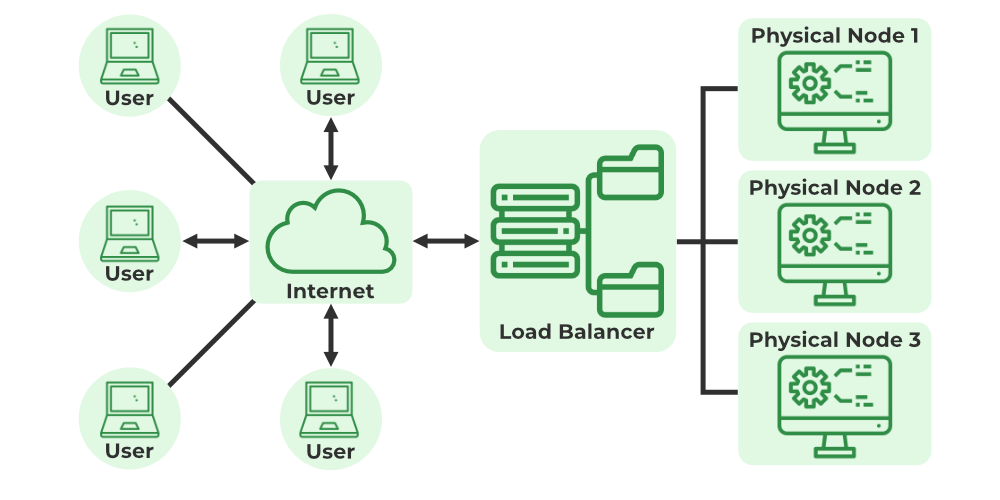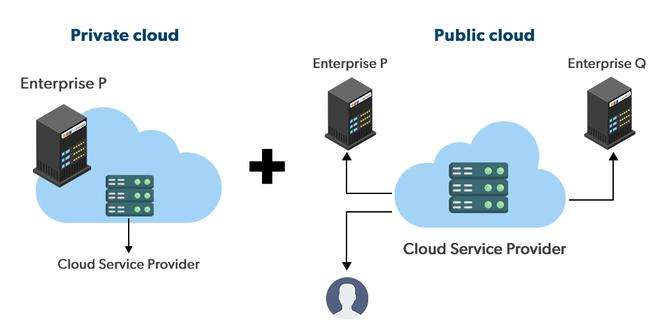
- Introduction to Resource Pooling
- How Resource Pooling Works in Cloud Computing
- Types of Resources in a Cloud Environment
- Virtualization and Resource Pooling
- Benefits of Resource Pooling in Cloud Computing
- Challenges and Risks in Resource Pooling
- Multi-Tenancy and Resource Sharing
- Resource Pooling in Public vs Private Clouds
- Best Practices for Efficient Resource Pooling
- Resource Allocation Strategies in Cloud Computing
- Future of Resource Pooling in Cloud Computing
- Conclusion
Introduction to Resource Pooling
Resource pooling is one of the basic principles of cloud computing, wherein resources like processing power, storage, and networking are pooled together and provided to various users or tenants dynamically and efficiently. The main objective of resource pooling is to provide more efficient use of resources, better scalability, and optimized service provision by pooling resources from various sources.This idea makes it possible to realize the flexibility and scalability that cloud computing promises, enabling resources to be allocated on-demand to multiple users or applications in a Cloud Computing Course. Resource pooling makes resource management easier in a cloud environment. It offers an economical means of ensuring that resources are utilized to the fullest extent by numerous users or applications without wasting physical hardware capacity. Cloud providers can offer services more effectively by combining resources, dynamically adapting to fluctuating demand, and enhancing overall performance.
To Explore Cloud Computing in Depth, Check Out Our Comprehensive Cloud Computing Online Course To Gain Insights From Our Experts!
How Resource Pooling Works in Cloud Computing
Resource pooling in cloud computing works by aggregating a collection of computing resources (like CPUs, memory, storage, and network bandwidth) into a single, shared pool. These pooled resources are then dynamically allocated and reassigned based on user demand. Virtualization technology plays a key role in resource pooling by enabling cloud providers to create virtualized versions of physical resources, which can then be managed and assigned to different users. When a cloud service provider offers computing power, storage, or networking services, these resources are pooled together in a central location. For example, multiple physical servers, storage devices, or networking equipment are combined into a virtualized environment that can be divided into smaller virtual resources, which are then allocated to various users or applications as needed. Significant steps in the process of resource pooling in cloud computing:
- Virtualization of Physical Resources: Physical devices such as servers, storage, and networks are virtualized into smaller, manageable virtual resources.
- Dynamic Allocation: The virtual resources are dynamically allocated to users or applications according to their needs and usage patterns.
- Elasticity: Resources can be increased or decreased in real time depending on demand so that users pay only for what they consume in PaaS Solutions Effortless Cloud Computing.
- Centralized Management: Cloud providers centrally manage the whole resource pool from a single point, enabling more efficient optimization, monitoring, and maintenance.
Types of Resources in a Cloud Environment
Several resources are usually aggregated in a cloud environment to offer end-to-end services. These resources are:
- Compute Resources: They are virtual machines (VMs), containers, or serverless computing instances that offer processing capacity for executing applications or services.
- Storage Capacity: Cloud providers provide different forms of storage solutions, such as object storage, block storage, and file storage, which can be aggregated and assigned to applications or users according to their requirements.
- Network Resources: These include virtualized network components like routers, switches, firewalls, and load balancers, which can be allocated and reallocated to different applications or users.
- Memory and RAM: This resource is critical for running high-performance applications. It can be allocated dynamically to applications based on their resource demands.
- Database Resources: Databases, such as relational or NoSQL, can be pooled and allocated dynamically to different users or applications in a cloud environment.
- Improved resource usage: Virtualization avoids wastage by ensuring that physical hardware resources are utilized efficiently.
- Flexibility: Resources may be allocated or reassigned when necessary, allowing users to expand their workloads according to demand.
- Isolation: Virtualization separates various workloads or users, ensuring one user’s workload doesn’t interfere with another.
- Cost Effectiveness: By combining resources, cloud providers can optimize their hardware infrastructure and cut costs, transferring these benefits to users. This reduces operational costs for companies and individuals who only pay for the services they consume.
- Scalability and Flexibility: Resource pooling supports elastic scaling, where resources can be added or decommissioned promptly in response to demand. It is simpler for companies to realign their infrastructure to accommodate variable demands.
- Optimized Resource Use: Pooling enables better resource allocation. Rather than lying idle, resources can be assigned dynamically across a set of multiple users and loads, enhancing aggregate utilization.
- Disaster Recovery: Cloud providers can replicate and back up pooled resources across multiple data centers, providing high availability and rapid recovery in the event of a failure.
- Load Balancing: Resource pooling allows cloud providers to load balance efficiently across available resources, enhancing performance and minimizing downtime in Cloud Computing Benefits, Challenges & Trends.
- Resource Contention: Several users or applications accessing the same set of resources can suffer from contention, where the demand for specific resources is more than the capacity. This can result in degraded performance or resource unavailability.
- Security Issues: In multi-tenancy, data leakage or unauthorized access is possible since various users are accessing the same underlying resources. Appropriate isolation and security controls need to be implemented to avoid these risks.
- Performance Variability: Resource pooling will lead to variability in performance based on how the resources are planned. For instance, a random spike in requests from a specific user will impact others using similar resources.
- Complexity in Management: Managing a large pool of resources, especially in multi-cloud or hybrid environments, can become complex. It requires efficient orchestration and monitoring tools to ensure that resources are allocated correctly and used efficiently.
- Dependency on Cloud Providers: Relying on a single cloud provider for pooled resources can result in vendor lock-in, making it difficult for businesses to switch providers or migrate workloads elsewhere.
- Cost savings: Resources are shared across tenants, lowering all users’ costs.
- Efficiency: The cloud provider can pool resources and scale them based on demand, improving overall efficiency.
- Security and data isolation: Ensuring tenants’ data remains private and secure is a critical challenge in multi-tenant environments.
- Use Virtualization Technologies: Virtualization enables better resource allocation and helps optimize resource utilization.
- Implement Auto-Scaling: Auto-scaling adjusts resource allocation dynamically based on demand. This helps avoid over-provisioning and under-utilization.
- Ensure Proper Resource Isolation: In multi-tenant environments, ensure proper isolation between users to prevent data leaks and provide security.
- Monitor Resource Usage: Continuously monitor resource usage to identify potential inefficiencies or bottlenecks in resource allocation.
- Leverage Load Balancing: Use load balancing to distribute workloads evenly across the resource pool, improving performance and minimizing downtime.
- Elastic Scaling: Automatically scale resources up or down based on demand.
- Quality of Service (quality of service) Management: Prioritize critical workloads over less critical ones to ensure performance.
- Resource Pooling and Segmentation: Segment resource pools based on workload type (e.g., high-performance applications vs. general-purpose workloads), a Career In Azure Cloud Key Roles Certifications And Trends.
- AI-powered resource management: AI will predict and optimize resource allocation based on historical usage patterns in a Cloud Computing Course.
- Edge computing: Resource pooling will extend to the edge of networks, enabling real-time processing and lower latency for applications like IoT and autonomous vehicles.
Virtualization and Resource Pooling
Virtualization is the technology that allows resource pooling to happen in cloud computing. It enables the abstraction of physical resources, such as servers, storage, and network devices, into virtualized entities that can be allocated, managed, and provisioned dynamically. Virtualization allows cloud providers to create multiple virtual machines (VMs) or containers on a single physical server, pooling resources from multiple physical machines and making them available to users in the DevOps Maturity Model. It also enables cloud providers to allocate or deallocate resources based on demand without affecting other users or workloads.For instance, using hypervisors like VMware or KVM, a cloud provider can virtualize physical resources, pooling computing power, memory, storage, and networking resources and allocating them to users as virtualized resources.

Benefits of Resource Pooling in Cloud Computing
Are You Interested in Learning More About Cloud Computing? Sign Up For Our Cloud Computing Online Course Today!
Resource pooling in cloud computing has some significant benefits:Challenges and Risks in Resource Pooling
Resource pooling is not without challenges and risks despite its numerous advantages:
Multi-Tenancy and Resource Sharing
One key feature of cloud computing is multi-tenancy, where a single instance of a cloud service or resource pool is shared by multiple customers (tenants). This allows cloud providers to maximize the use of their resources and offer more cost-effective services in a Cloud Computing Course. The resources are pooled together in a multi-tenant environment, but each tenant’s data and applications are logically isolated from others. Virtualization and containerization are often used to ensure that one tenant’s data does not interfere with another’s.
Benefits of multi-tenancy include:Looking to Master Cloud Computing? Discover the Cloud Computing Masters Course Available at ACTE Now!
Resource Pooling in Public vs Private Clouds
Resource pooling can be implemented differently depending on whether a cloud is public or private. In public cloud environments, resources are pooled across many customers or organizations, and the infrastructure is owned and operated by third-party cloud providers like Amazon Web Services (AWS), Microsoft Azure, or Google Cloud. Resource pooling in public clouds allows scalability, cost efficiency, and flexibility, Unlocking Scalability with Cloud-Native Tech. However, security and data privacy can be more challenging in these environments. In private cloud environments, resources are pooled within a single organization, either on-premise or hosted by a third party. Private clouds offer greater control, security, and customization, but they may be less cost-efficient and less scalable than public clouds.

Best Practices for Efficient Resource Pooling
To maximize the benefits of resource pooling, cloud providers and organizations should adopt the following best practices:
Resource Allocation Strategies in Cloud Computing
Resource allocation in cloud computing involves determining how resources (compute, storage, and network) are assigned to various workloads or users. Effective allocation is essential for maintaining performance, optimizing costs, and ensuring that workloads meet their requirements. Strategies for efficient resource allocation include:
Netflix utilizes AWS for resource pooling and elastic scaling, ensuring that it can handle billions of hours of video streaming during peak usage periods. By pooling computing and storage resources, Netflix can scale resources up or down based on demand. Airbnb pools resources across its platform using Google Cloud, ensuring high availability and optimal performance even during periods of heavy traffic. The cloud provider’s elasticity allows Airbnb to scale quickly when demand spikes.
Want to Learn About Cloud Computing? Explore Our Cloud Computing Interview Questions & Answer Featuring the Most Frequently Asked Questions in Job Interviews.
Future of Resource Pooling in Cloud Computing
The future of resource pooling will likely see improvements in automation, AI, and machine learning to optimize resource management. Technologies like serverless computing and edge computing will drive further innovations in resource pooling, allowing for even greater flexibility, scalability, and efficiency. Additionally, as multi-cloud and hybrid cloud strategies become more common, the need for efficient resource pooling across different cloud environments will increase.
Trends to watch for:Conclusion
In conclusion, resource pooling is a cornerstone of cloud computing that helps organizations optimize their infrastructure, reduce costs, and scale applications efficiently. While challenges remain, the future of resource pooling looks promising, with advances in automation, AI, and edge computing set to improve efficiency and performance further. As cloud adoption continues to grow, businesses must leverage resource pooling to stay competitive and maximize operational agility. Embracing emerging technologies will further enhance resource utilization, ensuring a more resilient and scalable cloud environment.





